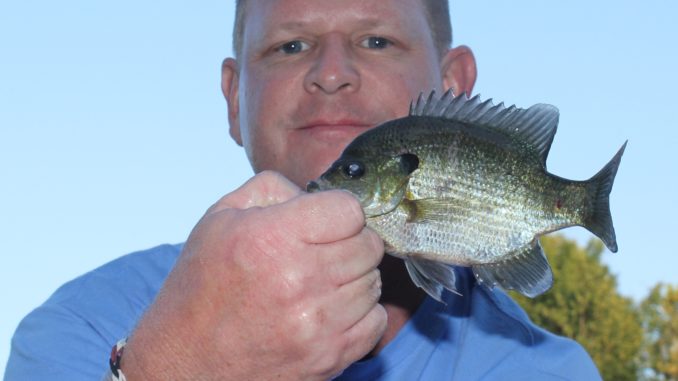
Shellcrackers, bluegills hitting worms and crickets in Wateree River
The bream bite is hot on the Wateree River, and Sumter’s Mike Spinks said that although shellcrackers and bluegill are keeping him busy, there is more to catching them than just tossing in a piece of bait and watching the cork go under.
“This river has a lot of great bream-fishing holes, but it takes some time to find the fish,” said Spinks. “Willow trees line the banks in many spots, and the water under these branches is a gold mine for bream,” he said.
While the willows hold bream under their weeping branches, they do create a challenge for anglers.
“Many of the branches droop all the way to the water, so you can’t cast in there without getting tangled up,” said Spinks, who has an easy solution. “When I find some good-looking willow spots, I go straight into the branches and cut them with a set of loppers to make room to cast. It only takes a few minutes to make a huge difference.”
After cutting these casting lanes, Spinks fishes elsewhere for a little while.
“Any place a large tree is down in the water is another good spot to look for bream. They love to get around structure, especially in the deeper bends of the river where downed trees offer cover and a break from the current,” said Spinks, who uses two different rigs for bream: an ultralight rod with a slip cork, two pieces of BB-size weights, and a No. hook; and a second ultralight rod with a bottom-fishing rig featuring a small bullet weight above a barrel swivel, followed by a 12-inch leader with a No. 6 hook.
With crickets and nightcrawlers as bait, Spinks finds bream around these downed trees.
“It’s usually the shellcrackers that hit the bottom rig and the bluegills on the cork, but sometimes those big fat bluegills will hit the bottom rig,” he said.
Spinks goes back to the willow trees next and sticks with the cork rig here.
“I anchor down in casting range of the willows and side-arm a cast under the branches. The slip cork helps here, because you can set your depth to anything, but still cast easily thanks to the cork sliding all the way down to the hook when it’s out of the water,” said Spinks, who will chang his cork setting to fish deeper if he catches mainly small bream.
Spinks said anchoring can be tricky.
“The edges along the banks of this river have some wicked eddies. You can anchor down, start fishing, (and) then get caught in an eddy and next thing you know, your boat is getting washed upriver or sideways into the willow trees or the downed trees and other debris. Anchor just inside the main river current or tie up tight to a downed tree or limb,” he said.


Be the first to comment